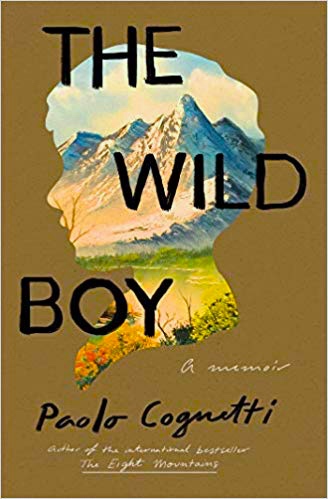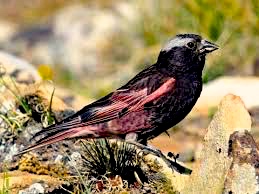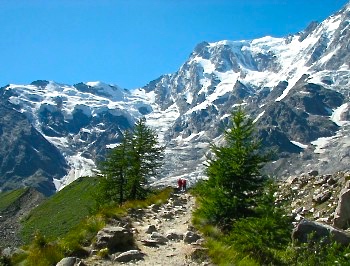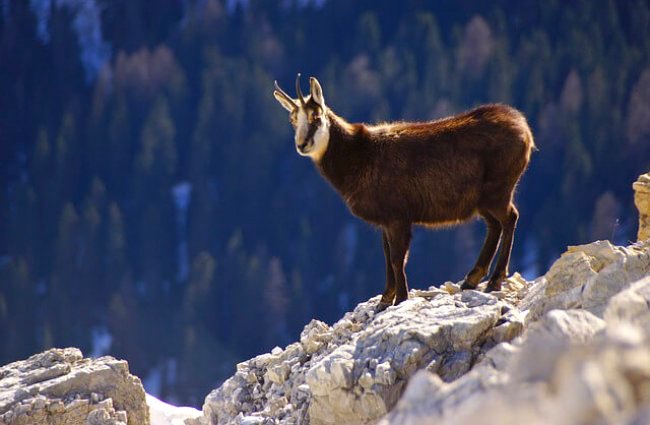Note: In 2017, Paolo Cognetti’s The Eight Mountains was WINNER of the Strega Prize, Italy’s most prestigious prize, and WINNER of the French Prix Medicis Etranger, awarded for a work of translated fiction by an author whose “fame does not yet match his talent..”
“At thirty I had almost forgotten what it was like to be alone in a forest, or to immerse myself in a river, or to run along the edge of a crest beyond which there is only sky. I had done these things and they were my happiest memories. To me, the young urban adult I had become seemed like the exact opposite of that wild boy, and hence the desire grew to go in search of him. It wasn’t so much the need to leave as the desire to return; not to discover an unknown part of myself but to recover an old and deep-seated one I felt that I had lost.”
 Paolo Cognetti’s previous book, The Eight Mountains, details a fictional life much like the author’s own early life and introduces a family from Milan who spend each summer in Italy’s northern mountains throughout the main character’s childhood and teen years. During this time, the speaker, Pietro, has adventures in the mountains, forms a strong friendship, learns to value nature, and eventually, becomes an adult. Realistic and filled with the insecurities of puberty, the novel allows readers to understand, if not identify with, the feelings of Pietro as he matures. The Wild Boy, a memoir, continues Cognetti’s themes. Here the speaker is the author himself, now thirty. He has completed his schooling, traveled, and worked for years in and around Milan, but he has not been to the mountains in a decade, and he feels an emptiness in his adult life without the forests, rivers, and mountain crests with which he, like Pietro, grew up. When he decides to revisit the mountains, The Wild Boy becomes a natural extension of one life vibrantly lived by two people – Pietro, the fictional character of Eight Mountains, and Paolo, the author of The Wild Boy. Those who loved the first book will be intrigued to follow Paolo in this memoir, as he continues his life as an adult, while newcomers to Cognetti’s writing will experience a fresh, modern point of view about the return to nature as experienced by a quiet young man deciding where his values – and his happiness – ultimately lie.
Paolo Cognetti’s previous book, The Eight Mountains, details a fictional life much like the author’s own early life and introduces a family from Milan who spend each summer in Italy’s northern mountains throughout the main character’s childhood and teen years. During this time, the speaker, Pietro, has adventures in the mountains, forms a strong friendship, learns to value nature, and eventually, becomes an adult. Realistic and filled with the insecurities of puberty, the novel allows readers to understand, if not identify with, the feelings of Pietro as he matures. The Wild Boy, a memoir, continues Cognetti’s themes. Here the speaker is the author himself, now thirty. He has completed his schooling, traveled, and worked for years in and around Milan, but he has not been to the mountains in a decade, and he feels an emptiness in his adult life without the forests, rivers, and mountain crests with which he, like Pietro, grew up. When he decides to revisit the mountains, The Wild Boy becomes a natural extension of one life vibrantly lived by two people – Pietro, the fictional character of Eight Mountains, and Paolo, the author of The Wild Boy. Those who loved the first book will be intrigued to follow Paolo in this memoir, as he continues his life as an adult, while newcomers to Cognetti’s writing will experience a fresh, modern point of view about the return to nature as experienced by a quiet young man deciding where his values – and his happiness – ultimately lie.
 The memoir opens in Milan in winter, with the thirty-year-old author feeling “drained, disoriented, and disillusioned…I had tried hard, but what did I have to show for it?….I was not writing, which for me is like not sleeping or not eating, in a kind of void I’d never experienced before.” To pass the time, he has read Henry David Thoreau’s Walden, and The History of a Mountain by Elisee Reclus. Ultimately, he is “particularly taken” by the journey of Chris McCandless, as told by Jon Krakauer in Into the Void. Believing that his “true nature” is connected to the mountains of his childhood and teen years, Cognetti decides to return and quickly finds a place to live, a small hut of wood and stone about six thousand feet above sea level. He has never been to this place before, but as it is just the other side of the mountain where he lived with his family in previous summers, about six miles from town and a few minutes away from the village, it feels familiar. Arriving in late April, he heads out along a mule track and through the slopes of the mountain, still covered in snow. For an unspecified time, he will live alone in his rented hut, surrounded by nature and the books and notebooks he has brought with him, hoping to restart his writing career.
The memoir opens in Milan in winter, with the thirty-year-old author feeling “drained, disoriented, and disillusioned…I had tried hard, but what did I have to show for it?….I was not writing, which for me is like not sleeping or not eating, in a kind of void I’d never experienced before.” To pass the time, he has read Henry David Thoreau’s Walden, and The History of a Mountain by Elisee Reclus. Ultimately, he is “particularly taken” by the journey of Chris McCandless, as told by Jon Krakauer in Into the Void. Believing that his “true nature” is connected to the mountains of his childhood and teen years, Cognetti decides to return and quickly finds a place to live, a small hut of wood and stone about six thousand feet above sea level. He has never been to this place before, but as it is just the other side of the mountain where he lived with his family in previous summers, about six miles from town and a few minutes away from the village, it feels familiar. Arriving in late April, he heads out along a mule track and through the slopes of the mountain, still covered in snow. For an unspecified time, he will live alone in his rented hut, surrounded by nature and the books and notebooks he has brought with him, hoping to restart his writing career.
That spring on Monte Rosa, he hikes and explores, and, fascinated by the wild life and the quietude, he is not lonely. For two weeks he does not see another human, and when a man comes up the path, he finds it “difficult to explain the effect a visit has when it comes after a period of complete solitude: for me, it had only been two weeks, and yet my heart started to beat faster on seeing that man approach.” The man is Remigio, his landlord, and they end up, ironically, talking about the writing of Erri De Luca and Mauro Corona; Cognetti ends up lending Remigio a book of stories by Rigoni Stern. Later, alone, he begins musing about hikes he has taken with his father and uncle on the adjacent mountain, reviews his plans to plant a garden for vegetables, and notes the eagles, foxes, goats, and marmots in the area. He cannot help wondering when the cowherds will be arriving with their cattle and herding dogs for a summer of grazing on the mountain.
Summer brings the cattle, and he shares a home-cooked dinner at the camp of a lame cowherd, Gabriele – a meal he “earned” by corralling two runaway calves for Gabriele. They continue to exchange dinners, occasionally, these being among the very few occasions in which Paolo has anyone to talk with until haying season brings him in contact again with Remigio, whom he helps in the fields. Later, he makes a long, frustrating journey exploring the sights at the eight thousand foot level, and while it brings him into contact with the chamois, a beautiful goat-like creature, he loses his way and becomes desperate to find a route back to his hut during the next several days of hiking. Solitude, he decides, resembles a house of mirrors: “Everywhere I looked I found myself reflected: distorted, grotesque, multiplied an infinite number of times.” Autumn arrives with little change in Paolo’s life, except, ironically, that he is now tending a herding dog who does not enjoy herding and seems to have no interest in cows. When the grass runs out and the snow begins in October, the cowherds and the cows return to ground level, the gas runs out, and the electricity becomes problematic. It is time for Paolo to return to Milan.

A black rosy finch, the kind of Alpine finch that Paolo sees when he arrives at the hut where he lives.
As is obvious from this summary, “action” in this book is often inaction, a cerebral coming to terms with life on the part of a young Paolo Cognetti, as much as it is a story of mountains, hikes, and unusual animals. Readers of fast-paced novels of adventure will be accustomed to plots with climaxes and resolutions, whereas a memoir, by definition, is a collection of memories, some of them the result of action and some of them of quiet reflection. Here the author bares his soul, without drama, honestly asking himself questions about his life, evaluating his choices, and making decisions based on his experiences. For those looking for a break in their own hectic lives, this book may be the perfect answer – an opportunity to share the life of a person of letters who wonders about taking a new direction, a quiet book by a thoughtful writer for whom the trip to the mountains is a chance to relive times past and learn from the experience. For many busy readers it will be a vicarious escape through someone else’s adventure, and, perhaps, an inspiration.
ALSO by Cognetti: THE EIGHT MOUNTAINS
Photos. The author photo is from https://leultime20.it/
Monte Rosa, the northern Italian mountain closest to the heart of the author. https://pixabay.com/
Chamois, an animal similar to a goat which lives at high altitudes, and which Paolo sees on his trip to the 8000-foot mark on the mountain. https://animals.net/
A black rosy finch, an alpine finch which greets Paolo when he arrives at his hut in the mountains. https://allaboutbirds.org


